





































































VOL. 104 ISSUE: 21
CONTACT THE DN
Newsroom: 765-285-8245
Editor: 765-285-8249, editor@bsudailynews.com
EDITORIAL BOARD
Kate Farr, Editor-in-chief
Trinity Rea, Print Managing
Editor
Olivia Ground, Digital Managing
Editor
Katherine Hill, Co-News Editor
Meghan Braddy, Co-News Editor
Zach Carter, Sports Editor
Logan Connor, Associate Sports
Editor
Ella Howell, Lifestyles Editor, Copy Editor
Jayden Vaughn, Associate Opinion Editor
Layla Durocher, Social Media
Editor
Andrew Berger,Photo Editor
Isabella Kemper, Associate
Photo Editor
Jessica Bergfors, Visual Editor
Brenden Rowan, Visual Editor
Julian Bonner, Associate Visual
Editor
Corey Ohlenkamp, Adviser The Ball State Daily News
(USPS-144-360), the Ball State student newspaper, is published Thursdays during the academic year except for during semester and summer breaks. The Daily News is supported in part by an allocation from the General Fund of the university and is available free to students at various campus locations.
TO ADVERTISE
• (765) 285-8256 or dailynewsads@bsu.edu
• Hours: 8 a.m.-5 p.m. Mon-Fri.
• ballstatedaily.com/advertise
TO SUBSCRIBE
Call 765-285-8134 between 9 a.m. and 3 p.m. Mon. -Fri. Subscription rates: $45 for one year. POSTMASTER: Send address changes to Daily News, AJ278, Ball State University, Muncie, IN 47306
JOIN THE DAILY NEWS
Stop by room 278 in the Art and Journalism Building. All undergraduate majors accepted and no prior experience is necessary.
The Ball State Daily News is committed to providing accurate news to the community. In the event we need to correct inaccurate information, you will find that printed here.
To submit a correction, email editor@bsudailynews.com.





Feb. 5: U.S. District Judge Deborah Boardman ordered a second nationwide pause Feb. 6 on President Donald Trump’s executive order seeking to end birthright citizenship, calling citizenship a “most precious right,” according to the Associated Press (AP). Boardman said no court in the country has endorsed the Trump administration’s interpretation of the 14th Amendment, and her court “will not be the first,” according to AP. 22 states with Democratic attorneys general are seeking to stop the order, and 18 Republican attorneys general announced this week they’re seeking to defend the president’s order, according to AP.


















Feb. 4: President Donald Trump proposed that displaced Palestinians in Gaza be “permanently” resettled outside the region during a meeting with Israeli Prime Minister Benjamin Netanyahu Feb. 4, according to the Associated Press (AP). This suggestion came ahead of comments from Trump’s Middle East envoy, who stated that a three to five-year timeline for Gaza’s reconstruction is not a feasible post-war plan. According to AP, Trump also hinted at reconsidering his 2020 peace plan calling for a Palestinian state as part of a two-state solution, stating, “A lot of death has occurred since I left and now came back.”

















Feb. 5: First-year head football coach Mike Uremovich has signed 12 student-athletes to his 2025 class. All but one are incoming freshmen; offensive lineman Adam Dolan transferred from Butler for his last year of eligibility. Of the additions, four hail from the Hoosier State: Westfield athlete Gabe Aromboles, Cathedral running back Jalen Bonds, Crown Point linebacker Lucas Szymborski and Westfield linebacker Mikeah Webster. Georgia defensive end Jamar Birden, Ohio offensive lineman Kaden Mayle, Tennessee OL Sam Spicer, Kentucky wide receiver Derion Talbert, Michigan long snapper Coby Tripp and North Carolina quarterback Kahlel Wright signed from out-of-state.



Ball State merges departments in College of Sciences and Humanities restructuring.

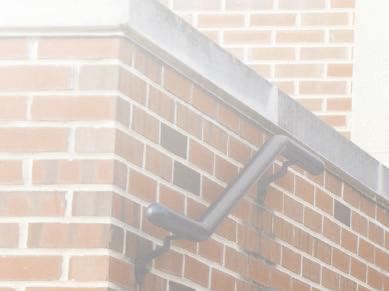
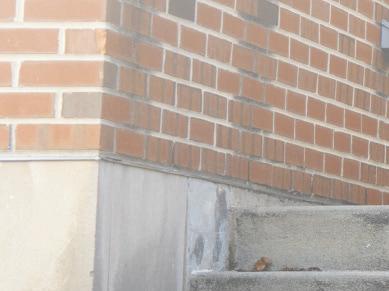
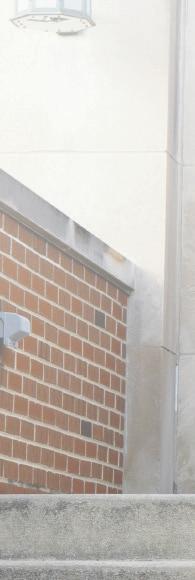


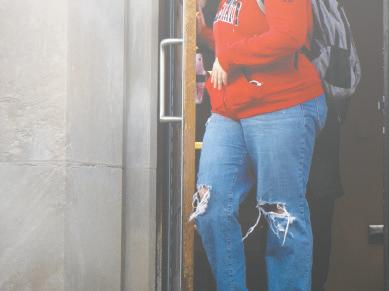
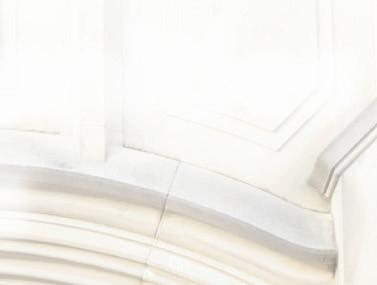
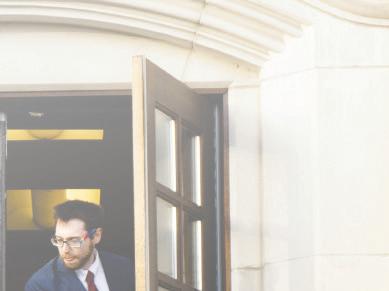
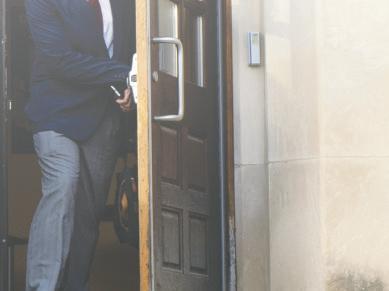

Meghan Braddy Co-News Editor
Ball State’s College of Sciences and Humanities (CSH) is finding new departmental synergies.
Maureen McCarthy, dean of the CSH, came before the Ball State Board of Trustees Dec. 13 to reveal a reorganization plan that will impact several departments within the college, including a merger between the Department of Environment, Geology, and Natural Resources and the Geography and Meteorology Department to form the new School of Earth, Atmosphere and Sustainability (SEAS). Additionally, the Department of Classics and Religious Studies will move away from the Department of Philosophy and be included within the Department of History.
McCarthy said via email the reorganization was influenced by faculty discussions about shared academic interests and exploring more opportunities for collaboration, noting “faculty in the respective departments had synergies they believed would lead to exciting research and curricular commonalities.”
She said reducing the number of departments minimizes the number of service responsibilities for faculty members, giving them more time to
The college continues to achieve the broader vision of education students to make discoveries and change the world.”
- MAUREEN MCCARTHY, Dean of the College of Sciences and Humanities

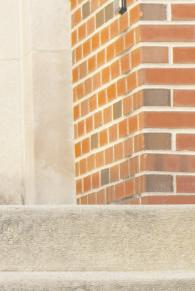
focus on increasing opportunities to work together on research projects and develop academic programs.
The reorganization process to achieve this began three years ago, beginning with discussions among department chairs, followed by a task force of faculty members who conducted a root-cause analysis and explored potential mergers that would work among the departments.
As a part of the process, faculty were also invited to participate in planning for the mergers.
“The first step was to engage chairs of all departments in a conversation about possible reconfigurations,” McCarthy said. “The second step was to convene a task force of faculty to engage in discussions.”
Despite these changes, McCarthy clarified students with majors and minors in the transitioning departments will continue to have access to the courses and resources they need, as academic programs are still expected to “thrive.”
“The college continues to achieve the broader vision of educating students to make discoveries and change the world,” McCarthy said. “Students learn in-demand skills that transcend industries and support lifelong success.”
See SYNERGIES, 04
The City of Muncie confirmed via Facebook Feb. 4 the annexation of a 12-acre parcel of land donated by Ball State University nearly a year ago. This strategic move marks the beginning of a collaborative effort to create a new subdivision and enhance housing options in the region, according to the press release.
Before moving Senate Bill 193 to the full chamber, the Senate’s Environmental Affairs Committee amended the bill Feb. 4 to require two inspections at all confined feeding operations every five years. Three of Indiana’s largest farming associations spoke out against the bill, according to Indiana Capital Chronicle.
Senate Bill 120 would make refusing to submit DNA during felony booking a Class C misdemeanor, according to the Indiana Capital Chronicle. Supporters say it closes a legal loophole, while critics argue it threatens genetic privacy. The bill passed committee 7-0 Feb.4 and is now moving to the Senate floor.
Continued from Page 03
Associate Professor of Religious Studies
Matthew Hotham co-authored the department proposal to break away from the Department of Philosophy and move into the Department of History. After discussions between faculty members, it became clear the merger could benefit everyone involved.
However, some students in the affected departments have mixed reactions to the change. Elijah Sturges, a third-year Ball State student double majoring in history and religious studies with a minor in classics, expressed concerns about the university’s motives behind the merger.
“Trying to increase collaboration between professors sounds good. Perhaps it’s cynicism talking, but I hesitate to say that’s the real reason for this merger,” he said. “I know Ball State is trying to take a bigger angle on our STEM subjects, and of course, lumping religious studies, classics and history into one department will make it less expensive to fund those subjects.”
Despite this skepticism, Sturges said the change could create more academic opportunities.
“I hope to be a religious historian, and one of the nitpicks I have is I don’t see many religious history classes,” he said. “There’s definitely interplay that can [happen in] three of the departments.”
Sturges added that while this transition could expand course offerings, the merger’s most significant impact would likely be on faculty rather than students.
While Hotham is optimistic about the changes, he acknowledged the challenges ahead, such as transferring offices and departmental documentation from the North Quadrangle Building to the Burkhardt Building, where the Department of History is currently housed.
One concern with this is the future of the meditation and reflection room currently located in the North Quadrangle Building in room 232, which students can use for personal prayer. Hotham said discussions about whether the room will stay in its current location or be relocated to the Burkhardt Building have yet to occur.
While the long-term plans for the space are still unclear, Hotham is committed to ensuring it continues to exist in some capacity, as he’s “invested in making sure it has a future somewhere.”
As part of the departmental reorganization, religious studies will also be breaking away from its long-standing alignment with the Department of Philosophy to join the Department of History. While this does present new opportunities for collaboration, it also marks the end of an academic partnership, leaving the Department of Philosophy with fewer faculty members, Hotham said.
When the Department of Religious Studies was asked to consider potential merger partners, Hotham said the decision was not about leaving
the Department of Philosophy behind but rather about making sure religious studies was with a department that would offer them more resources and structural support.
He and his colleague, Joseph Marchal, a professor of religious studies, had taken on various service responsibilities within the Department of Philosophy, including leadership roles on committees for the past two years.
Hotham said the imbalance now raises concerns for the long-term stability of philosophy, a department that, like religious studies, has faced declining faculty numbers in recent years.
“There is just a certain minimum amount of work that has to be done to be a department, and the fewer people you have to do it, the more each individual has to do,” he said.
The formation of SEAS brings together the Department of Environment, Geology and Natural Resources and the Department of Geography and Meteorology, creating a unified academic department focused on environmental and atmospheric sciences.
Petra Zimmermann, chair of both transitioning departments, said the merger was logical.
“Reorganizations and mergers are part of the current higher education landscape,” she said via email. “The union between environment, geology, natural resources, geography and meteorology seemed like a natural fit.”
Zimmermann played an active role in the transition, meeting individually with faculty
Before: Two separate departments
members last fall to present the potential advantages of a merger. She emphasized that faculty were allowed to provide input, and when both departments met to discuss the idea, the majority voted in favor of the merger.
Despite these structural changes, Zimmermann reassured students their academic experience would remain unchanged but encouraged students to explore more coursework outside their major.
Second-year natural resources and environmental management major Thomas Wallbank views the merger as a positive step.
“I do expect there to be benefits when combining these departments,” he said. “Combined, they take a larger portion of the student population and can get more resources and funding.”
He also believes the interdisciplinary aspect of the merger will provide students with a stronger academic foundation.
“Having a wide understanding of different principles makes you a better candidate for jobs,” he said. “The variety of credits needed in one of these majors is already diverse to showcase that idea, but this will make it stronger with fewer restrictions.”
One of the key benefits of SEAS is the potential for increased collaboration among faculty and students. Zimmermann said faculty from both departments have already worked together on research projects and served on graduate student committees, particularly within the Environmental Science PhD program.
After: Merged to form the School of Earth, Atmosphere and Sustainability (SEAS) Impact:
• New minors and certificates could be developed
• Potential for new courses, programs and research initiatives
4See SYNERGIES, 14
• More motivation for students to take classes outside their majors but still within SEAS
Before: One unified department
After: Classics and Religious Studies moves into the Department of History Impact:
• History, religious studies and classics courses can be cross-listed for more course offerings, including upper-level ones
• Access to broader courses, including those from other departments focusing on religion, such as English, Jewish studies and art history
• Religious studies students can have a full-time adviser within history instead of splitting advising resources with philosophy
Before: Two separate departments
After: Merged to form the Department of Anthropology and Sociology Impact:
• Programs remain distinct for now
• Increased interdisciplinary collaboration among faculty
• Potential for new course offerings, internship opportunities and community engagement initiatives in the future
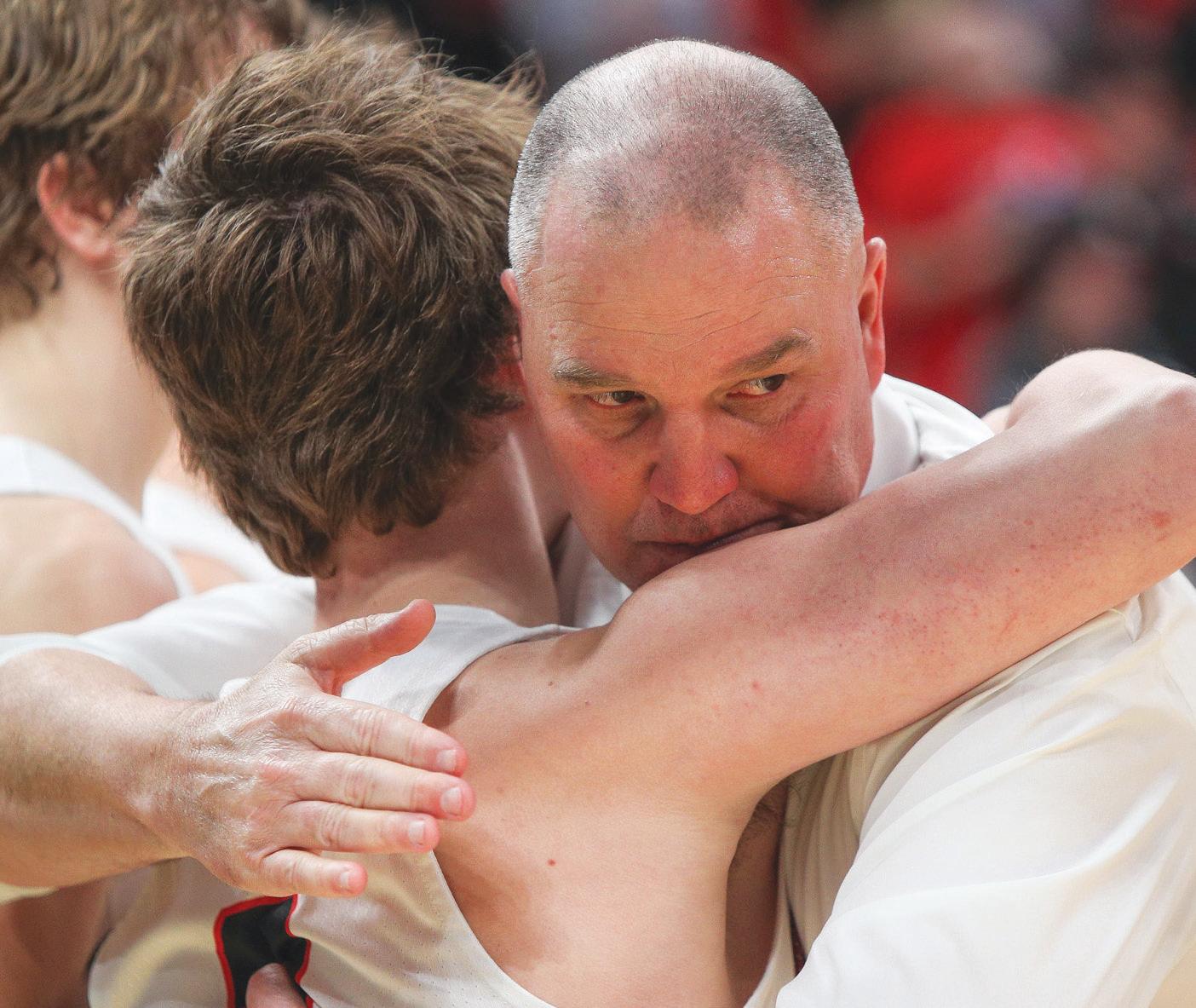
Junior Zoe Middleton was named the Mid-American Conference (MAC) Gymnast of the Week after her efforts aiding the Cardinals to a dual win over MAC foe Bowling Green. Middleton put up her best performance of the season at Bowling Green with a 39.200 in the all-around. She also took home the floor competition with a score of 9.900.
Track and Field
Rogers named MAC Field Athlete of
Ball State senior Jenelle Rogers was named the Mid-American Conference’s (MAC) Field Athlete of the Week after her performance in the PNC Lenny Lyles Invitational. During the event, Rogers finished in four of the five events, winning her first pentathlon of the season with 4,188 points. She now leads the MAC in pentathlons and is eighth overall in the NCAA.
Men’s Basketball
Sparks earned MAC Player of the Week
Ball State senior Payton Sparks was named the Mid-American Conference’s (MAC) Player of the Week after averaging a doubledouble — 23.0 points and 15.5 rebounds — in games against Buffalo and Western Michigan. Against the Bulls, Sparks scored a career-high 27 points to help snap the Cardinals’ two-game losing streak.
For the last 18 years, the Luce family has played a big part in Wapahani basketball.
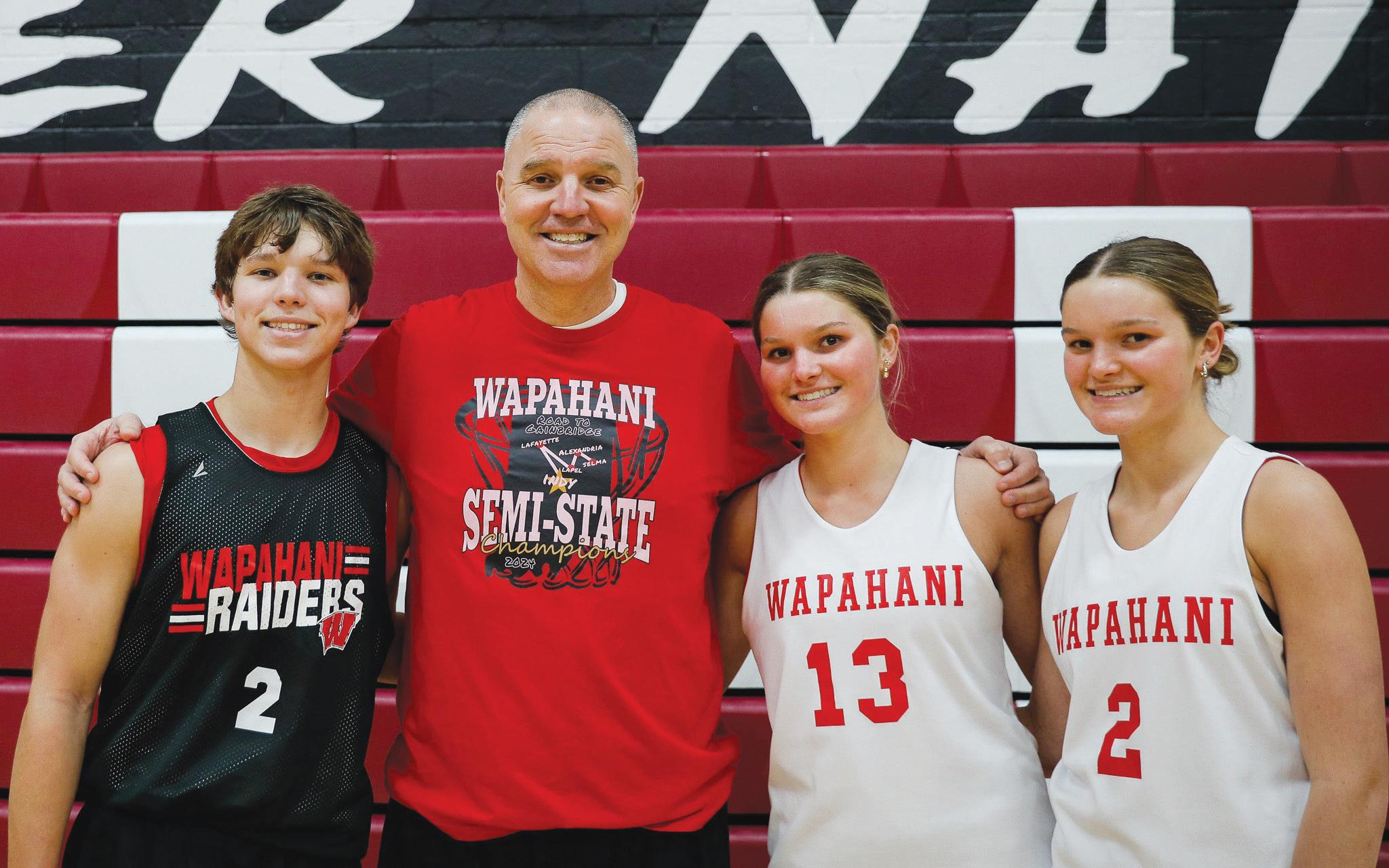
Zach Carter Sports Editor
Matt Luce applied for the Wapahani boys’ basketball head coaching job in 2002 but didn’t get the job his first go-around.
Now in year No. 18 of the current head coach’s tenure, Luce and the Raiders are 324-98. They’ve won six Delaware County titles, six sectional championships, two regional championships, one semistate title and were the Class 2A state runner-ups after falling in the 2023-24 state championship game.
The accolades speak for themselves, but it’s not just the results that Luce has helped the Raiders achieve. He wanted to change the culture and wanted the community around his hometown of Selma, Indiana, to feel pride.
But most importantly, he wanted to help build a place where his family could thrive.
“We wanted our kids to learn from athletics and
to be involved in the entire community,” Luce said.
“The best thing about it is through these years of working with our own children, we’ve been able to get other families involved that have got an opportunity to improve and learn from sports.”
‘I wanted to help change that’
The Luce family and the connection with Selma did not start with Matt. His grandparents are from the area, and it has spread down to the current generation.
Luce’s love of sports started with his dad, Mike, who served as a teacher at Shenandoah for nine years and was an assistant coach for the boys’ basketball team. Mike went on to help build the youth sports programs at Wapahani with the basketball league currently celebrating its 50th season.
“He was phenomenal with youth sports and was ahead of his time,” Matt said. “He coached second grade basketball, third grade basketball and all of
our baseball teams. There are so many people that he influenced throughout Delaware County.”
But while he was helping other kids get into sports, he made sure his son was getting attention as well. Every week, Mike would take Matt to watch Wapahani play. It didn’t matter the opponent or what time the game started. They were there for every home game.
“We had a connection with our school, and that’s when it started for me,” Matt said.
When Matt and his older brother, Joe, began to play basketball for the Raiders, Mike made sure to celebrate with them.
Before every high school game his sons played in, he would decorate their rooms with signs and grab stringers from the doors after every game. He would also leave his job at General Motors early and stop by the MCL cafeteria in the Muncie Mall to bring them pregame meals before every contest.
While it’s common now, Mike videotaped every game his sons played in. Whether it was
basketball or baseball, Matt still has all of the footage on VCR tapes.
“I think it was a way of keeping him quiet, too,” Matt said. “Instead of coaching and yelling from the stands, he knew that was not a positive thing. So, he videotaped to stay quiet, but he wanted us to know how important it was to see us on video … We all watched a lot of those games and made a lot of corrections.”
Matt said his three sports heroes were Mike; former Wapahani and Delta head coach Paul Keller; and Brian Dudley, Wapahani’s longtime former baseball head coach.
“Those are phenomenal coaches, but they’re better people,” Matt said.
After four years of high school basketball and baseball, Luce attended Purdue University and played baseball for the Boilermakers. That’s where he met his wife, Marie. At the time, she wasn’t a basketball fan unless it was watching Purdue games.
It’s
the
fact that my family is involved and we have an entire family of youth players, middle school players and high school players that are invested and want to be a Wapahani Raider.”
- MATT LUCE, Wapahani boys’ basketball head coach
“I had to be a [basketball fan.] It was that or not to be around him,” she laughed.
After graduating with a business degree, Luce wanted to become a head basketball coach. He had coached at the junior varsity and middle school level but wanted to move up. After two years of working in Texas, Matt and Marie moved back to Indiana after the factory they worked at shut down.
Once he returned to the Hoosier State and got a teaching degree at Purdue, Matt started coaching at Fountain Central with Joe. After his brother left, Matt became an assistant coach for the varsity boys basketball team at Crawfordsville High School. After a few more stops at other high schools, Matt interviewed for the position at Wapahani for the first time.
“The truth is, if I would have gotten the job, I probably wouldn’t have stayed very long,” Matt said. “At the time, I was just trying to become a head coach and was searching for bigger and better things.” But after a few more stops, the job was open once again ahead of the 2007-08 season during a Raiders streak of 10 losing seasons.
“Wapahani had been struggling there … and there was just not a lot of pride in the basketball program,” Matt said. “I wanted to help change that.”
‘A team that people were proud of’
His first assistant coach to join him was Chris Willis, a Wapahani graduate who is currently in his final season with the program. Together, the two began working on a plan to change things.
“The vision at that time was to make it where the program had pride, whether it be wins or losses,” Matt said. “We just wanted to have a team that people were proud of. Coming in, our vision was for [the program] to look a lot like when we went to school. We didn’t win every game, but we had a lot of pride in our community.”
Part of the idea was to use the youth program Mike started years ago to feed the team. Matt knew this was important for success and is still something the varsity coaching staff still incorporates to this day.
“I spend every Saturday morning refereeing and organizing that league,” Matt said. “Then, on Sundays, for the last 18 years, I’ve been in charge of the East Central Indiana Basketball League, which is a competitive league throughout four counties.”
Using those programs has helped get the kids around Selma interested in the sport. They also get to play at halftime of the junior varsity and varsity
games every time the Raiders play at home.
In his first season, Wapahani finished 13-8. In the last four seasons, the team has been 85-11, the highest winning percentage in the entire state of Indiana for boys’ high school basketball.
Matt said that’s because players like former Raider — Delaware County and Wapahani’s alltime leading scorer — Isaac Andrews and current player, junior Camden Bell, have watched from behind the Wapahani bench since they were young.
“The [current] juniors and seniors have grown up watching Wapahani basketball,” Matt said. “They have grown up with me and our coaching staff, wanting one day for their opportunity to shine … Now, it’s their turn.”
But Matt has had something else other than success in his time coaching the red and white. His kids have been a part of both basketball programs.
His oldest son, Drew, played for him from 2016-20. His oldest daughter, Lauren, played from 2019-23 and was a part of the Lady Raiders’ teams that won the 2022 and 2023 Delaware County championships.
Right now, the final wave of Matt’s kids is helping the program continue its success.
Matt’s youngest son Nate — who plays for his father and also is a part of Wapahani baseball — said the time he gets to spend with Matt is something he’ll never take for granted.
“We have a good bond through basketball, even baseball,” Nate said. “It’s an unbreakable bond.”
Matt’s youngest two kids — junior twins Megan and Emily — compete for the Raiders’ girls’ basketball and volleyball teams. Over the last three years, the two have helped the Raiders girls’ basketball team to a 54-18 streak.
For them, they all realized how important basketball was to their family at different times. For Nate, it was when his mom was pregnant with the twins. During a game, Wapahani fans threw diapers at Marie to celebrate the news. At first, Matt was not pleased. However, he was reminded by Mike what it represented.
“At the time, I was embarrassed and mad because it was taking away from the game,” Matt said. “My father [Mike] said, ‘Hey, how stupid are you? Do you realize how neat this is, and how special this is, and how much money this is going to save you, too?”’
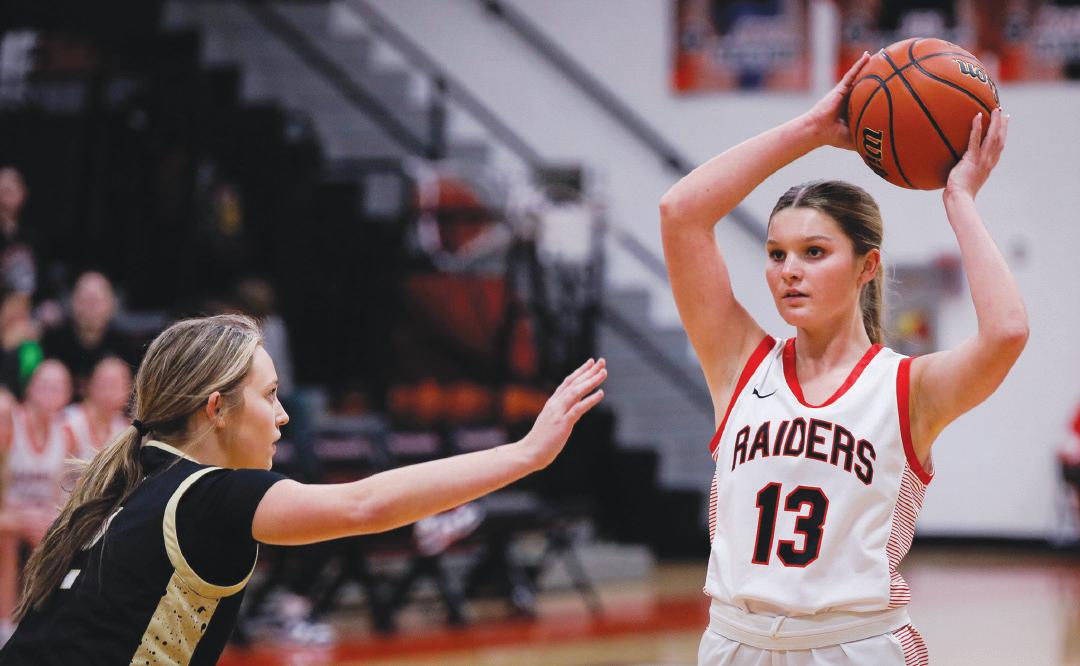

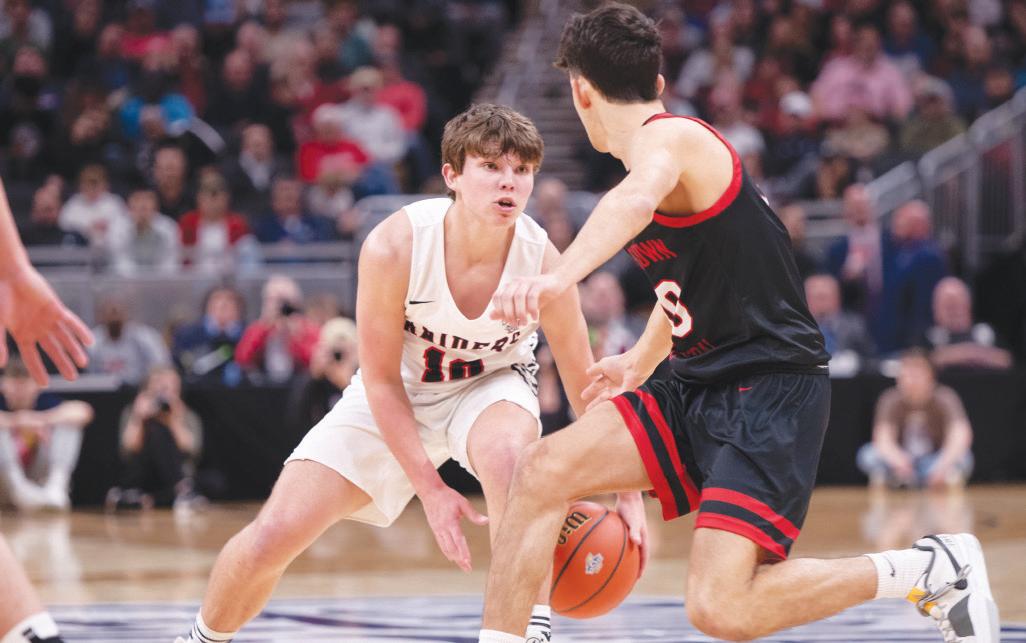
Junior Emily Luce looks for a pass Jan. 28 during a game at Wapahani High School. Both of the Luce sisters, including Marie, play for the Raider’s girls’ basketball team.

We knew one day that when these three get to high school, there’s going to be an end to the Luce kids playing on the basketball teams. It’s a wonderful thing and a bad thing.”
- MATT LUCE, Wapahani boys’ basketball head coach
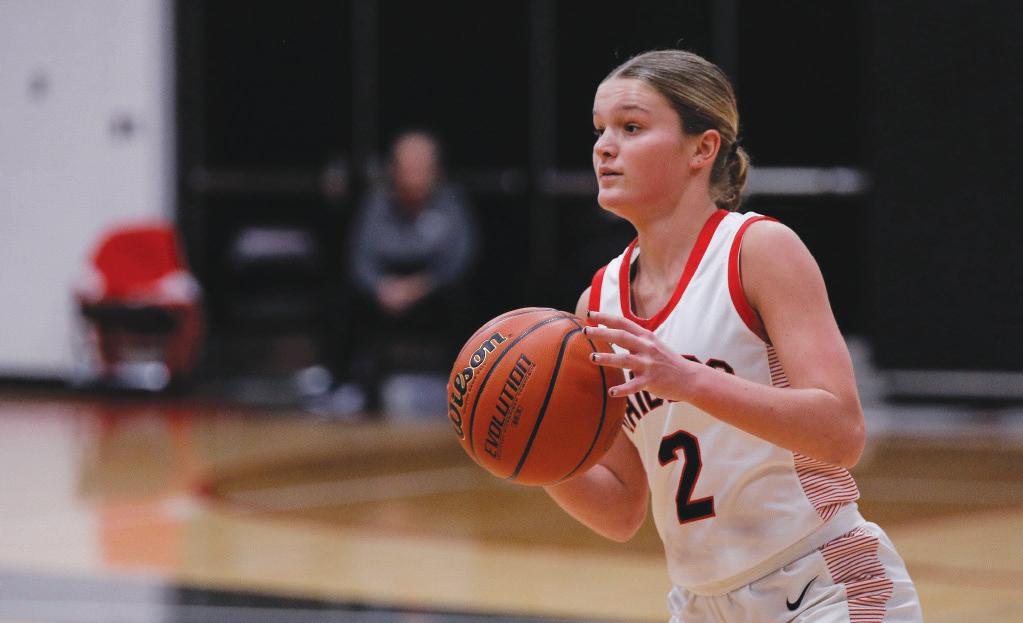
Wapahani head coach Matt Luce yells for movement from his team against Monroe Central Feb. 9, 2024, at Monroe Central High School. Wapahani’s win over Monroe Central marked Luce’s 300th career win with Wapahani.
ANDREW BERGER, DN
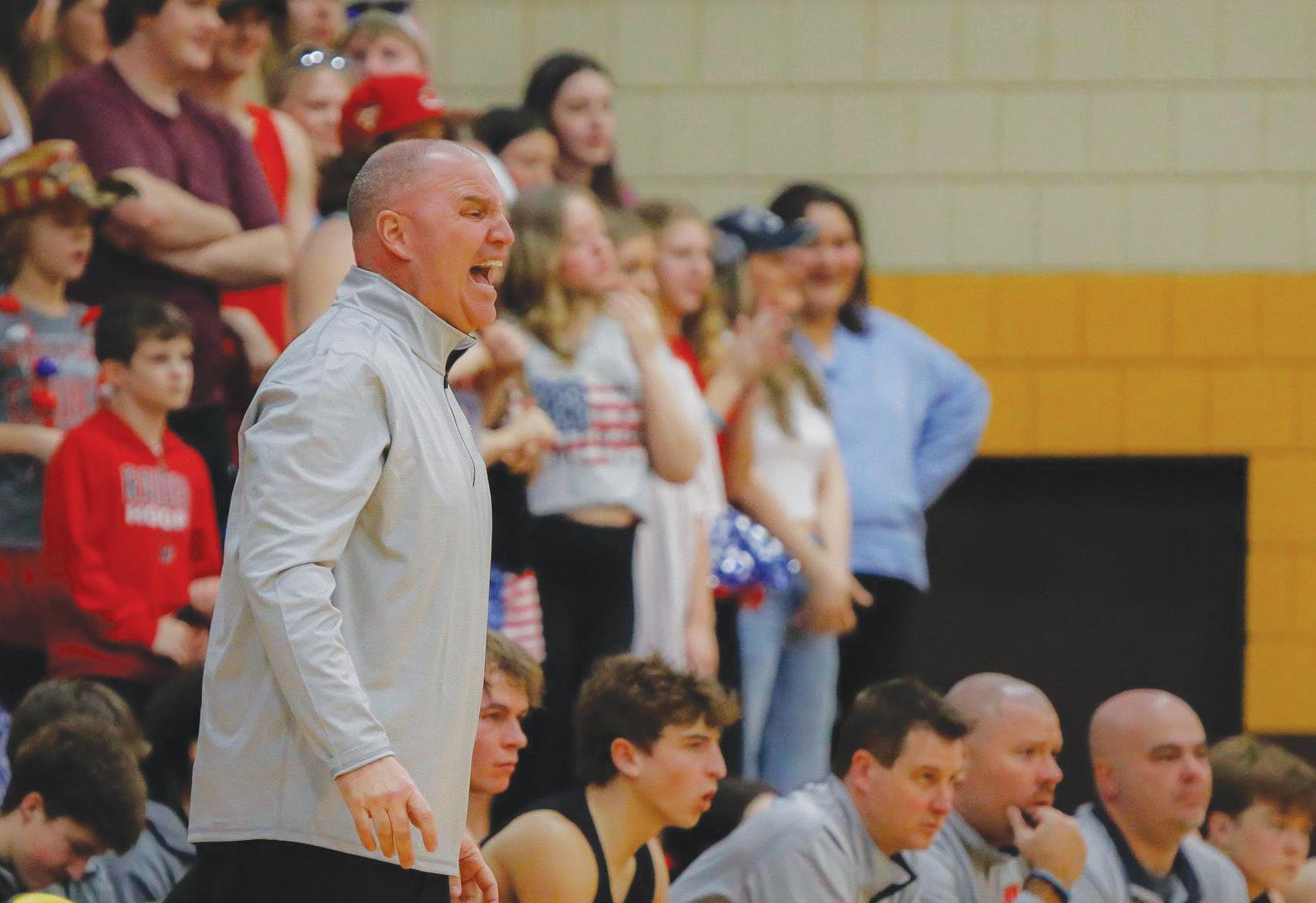
‘18 years’
While the family loves basketball, Nate said he and Matt are pretty good at ending the basketball mindset once they leave the Wapahani gym. The same goes for Megan and Emily. However, one thing that doesn’t ever go away is the family’s competitiveness. Even board games can get out of hand.
Marie agrees that she is the most competitive out of the crew and has had to cut back on playing games. While she wasn’t originally a basketball person, she is known to be a vocal supporter in the crowd.
“My mom would always tease me that I needed my water bottle and my sucker to keep my mouth [shut] from yelling and being too loud,” Marie said. With this being Nate’s final year and the twins only having one more year left, this generation of Luce kids is almost at the end of their Wapahani athletic careers. Matt has coached his youngest son his entire life but knows this was always going to happen one way or another.
“We knew one day that when these three get to high school, there’s going to be an end to the Luce
kids playing on the basketball teams,” Matt said.
“It’s a wonderful thing and a bad thing … I’ve been waiting for this for 18 years.”
Over the last four years, Nate has been a part of the winningest Wapahani boys’ basketball classes of all time. He’s also one of the first Raiders to ever lead Wapahani to a state championship game amongst other accolades. To him, knowing that the Luce family has been connected with the name across his chest gives him pride.
“It’s so special. My grandparents and my greatgrandparents have been through this corporation, and it’s so special and fun,” Nate said.
To the twins, it’s the same motivation.
“It just makes you want to carry it on and be a part of it even more,” Emily said.
The girls’ team is 18-4 on the year and will open the state tournament Feb. 7 against Eastbrook. For the boys’ squad, they are 15-1 and ranked as the No. 1 team in Class 2A. Their goal is to return to the state finals.
Matt said he wants to keep coaching for as long as he can. Being the assistant principal and athletic
director as well, he wants to make sure the growth he’s seen around the athletic program continues.
“When you come to a Wapahani basketball game on Friday night, you’re not only showing off the high school basketball team,” Matt said. “You’re going to show off our cheerleaders, our band, youth basketball teams and our choir. You’re going to show off our student section. Even though it’s not a big school, there’s going to be 50 kids standing in that cheer block. I just think that there’s a beauty to it.”
To him, one of the moments that showed that his work has helped the community was in last year’s state championship game. As the Raiders were trailing with little time left, he called a timeout so the four Wapahani seniors could be honored. The little town of Selma filled almost two full sections of Gainbridge Fieldhouse, and as the whistle sounded, the Raider faithful gave them a standing ovation.
It’s still something that Matt thinks about often because of where the program was when he started.
“Emotional but proud ... There were so many friends and alumni that either I played with, or I’ve
watched growing up at that game,” Matt said. “... I think it’s what’s been built. They just want to cheer on a bunch of good guys. And again, we tried year after year after year to win the county tournament. We tried year after year to win the sectional.
“The guys that have the gray beards and who have been with me for 18 years [and have seen] the improvement and the growth of our program, they know how much it meant to all of us to be there.”
But in the end, there is one thing that stands out amongst the rest.
“When I came here, Nate was six months old. The twins were born here during my first year of basketball,” Matt said. “Is it because we have some secret sauce? No, not at all. It’s the fact that my family is involved, and we have an entire family of youth players, middle school players and high school players that are invested and want to be a Wapahani Raider.”
Contact Zach Carter via email at zachary. carter@bsu.edu or via X @ZachCarter85.

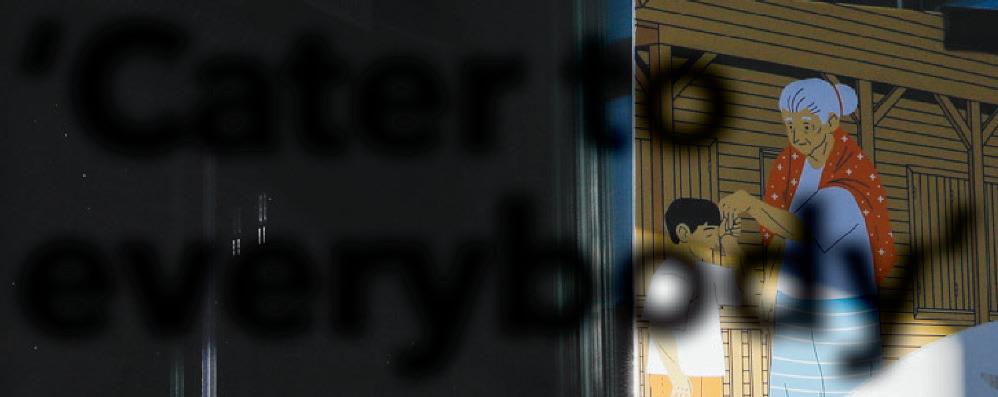
Filipino restaurant Baryo has gained traction in the Muncie community.



Ball State University’s Department of Theatre and Dance is presenting Natasha, Pierre and the Great Comet of 1812 beginning Feb. 7 and 8 at 7:30 p.m. There will also be shows Feb. 11-14 at 7:30 p.m. with a matinee at 2:30 p.m. Feb. 9. The show is a modern musical adaptation of a section from the book “War and Peace.” Available tickets are limited and can be purchased online, over the phone or in person through the College of Fine Arts Box Office.
This year’s Ball State Dance Marathon is Feb. 8, beginning at noon in the Jo Ann Gora Student Recreation and Wellness Center. The event is free and open to all Ball State students and is expected to last until 8 p.m. The event is aimed to raise funds in support of the Riley Children’s Foundation. Donations to the student-led initiative are accepted online.
The Muncie Public Library has events open to the community throughout February catered to both kids and adults. Feb. 8 from 2 to 4 p.m. there will be a Black History Month Jazz Cafe at the Maring-Hunt Library. They will have a “cozy cafe-style environment” to celebrate Black history with jazz classics.



A new authentic Filipino restaurant in Muncie is enjoyed by locals and has attracted people from surrounding states.
Ella Howell
Lifestyles and Copy Editor
Maria Eladia was born and raised in the Philippines with her mother and father who began a business sharing their cooking with the people in their community.
Eladia’s mother started a small, unofficial business in her backyard. With a factory in front of her home in the Philippines, her mom didn’t let the opportunity pass her by.
She began making food and selling it to the factory employees. Once they moved to a new home, her parents opened two restaurants. Now,
Eladia met her husband in the Philippines when they were in eighth grade. Following Maria’s move to the United States to finish college, Cabasag joined her.
In May 2023, Eladia and Cabasag opened PositiviTea, a boba tea shop on McGalliard. They hoped to branch out in their incorporation of traditional Filipino food beyond prepackaged snacks.
After selling boba and Filipino snacks to people in Muncie for over a year, they opened Baryo in August 2024 in downtown Muncie.
“Filipino food, there’s a lot of flavors in there, especially with my personal favorite, which is the pancit. It’s like noodles, and we have a lot of
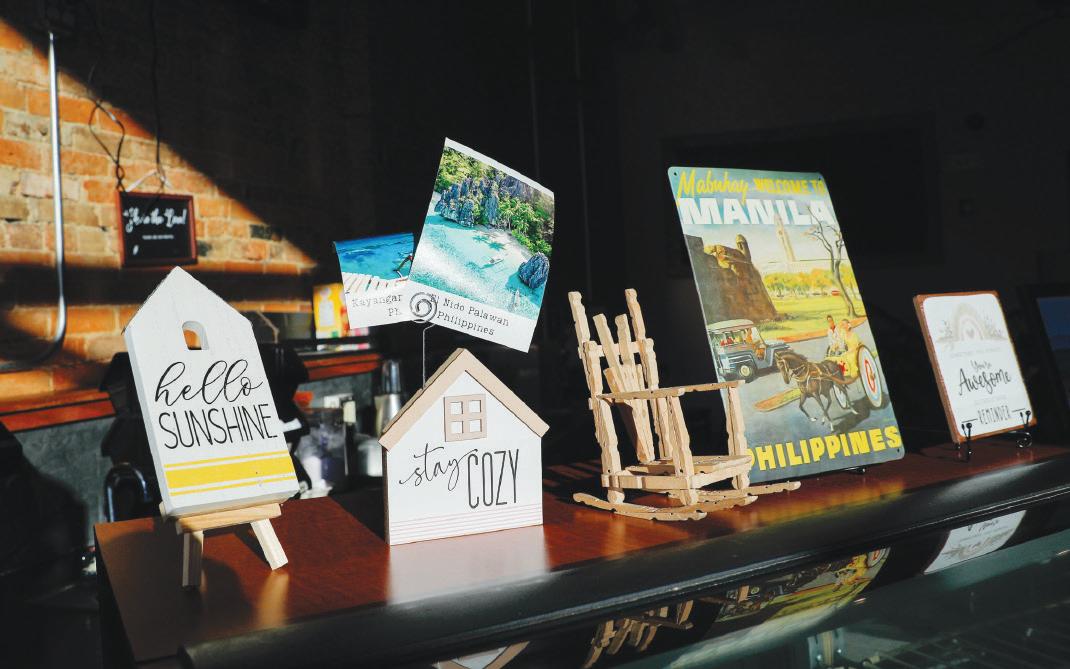
Baryo has pancit bihon or pancit canton, describing the thickness of the noodle. Either is served with your choice of meat. They also have a dish that blends the two, as well as pancit palabok, served in a rich and savory shrimp sauce, and pancit malabon, served with a savory sauce and “generously” topped with seafood.
Onnie Adams has been a server at Baryo since the family business opened. He encourages people to ask questions when ordering and is happy to give recommendations to people less familiar with some of the items on the menu.
“That’s why I feel like I’m here. I mean, as a server … I really just want to make their experience,” Adams said. “Don’t be shy to come through.”
He also recommends people come enjoy their food in groups. He said it’s common in the Philippines for everyone to order individual entrees but share with everyone at the table so “everyone gets a little pick of everything.”
In addition to serving, Adams aims to bring a warm and welcoming atmosphere and set the tone for people’s expectations.
“The impact Baryo has had for the community is just introducing a new cuisine to Muncie,” Adams said. “It’s something different, for sure, than just going to a chain restaurant.”
The food at the restaurant comes from Eladia’s family recipes, and her family has been a big support throughout the process of them starting their businesses, especially her mom who has been there from the beginning.
“My family’s very supportive. They’re really proud of us, and then they’re the taste testers,” she said. “They tell us, ‘Hey, this is too sweet, tone it down a bit [or] your tea is too strong.’”
When they get the chance, the family will come out from the kitchen and greet customers. Eladia has been surprised by the distance people are willing to go for authentic Filipino cuisine. “We like to go around tables, and there’s a lot of Filipino people but not from Muncie,” she said. “I was so happy; they came from Ohio, Fort Wayne, [and] I was like, ‘Do you guys have restaurants there right?’ and they were like ‘No.’”
Our hearts are full because we didn’t expect a lot of people [supporting us] because there’s not a lot of Filipino people here. So we figured, ‘Hey, we need to cater [to] everybody.’ Seeing the community, the location, everyone supporting us feels great.”
- MARIA ELADIA, Co-owner of Baryo

The Daily News is a weekly, student-directed and nationally award winning newspaper. Its 100+ year history makes it the longest-standing student media organization on campus and one of the nation’s top college newspapers. Providing the campus community with breaking news and accurate, timely information both in print and online, students can get involved from day one by working on staff or just simply staying informed.




















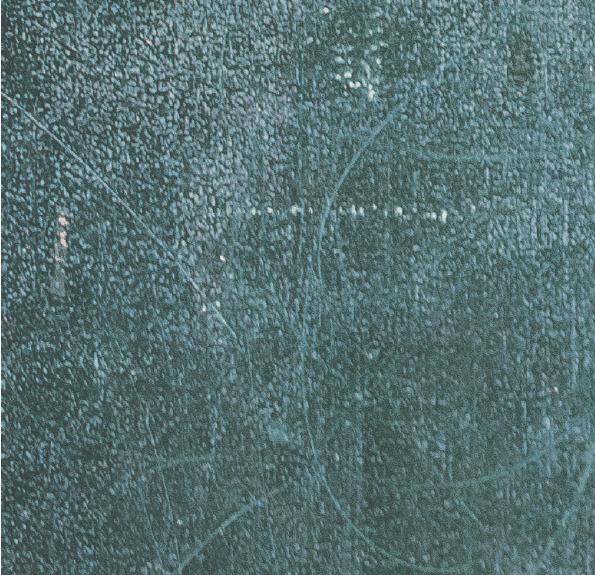


















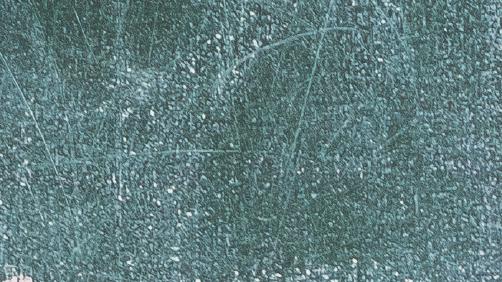



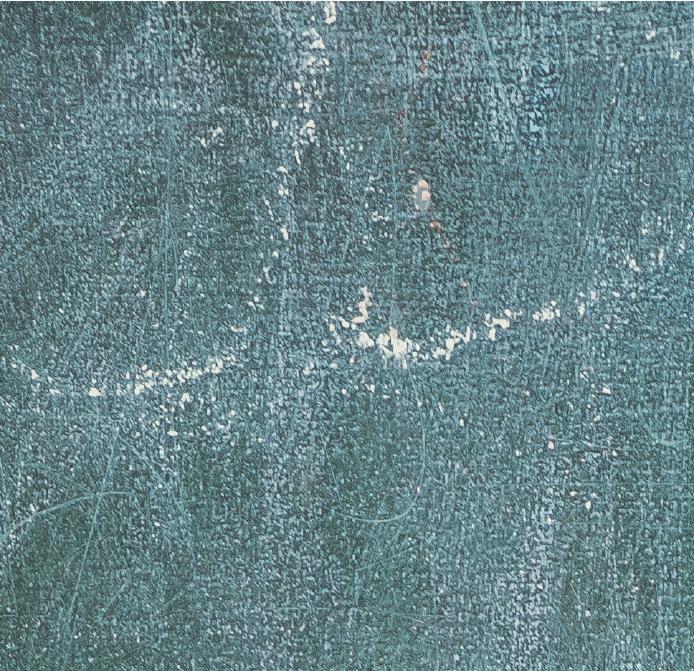















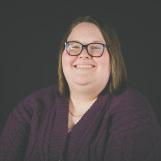

Olivia Ground is a fourth-year advertising major and writes “Liv, laugh, love” for the Daily News. Her views do not necessarily reflect those of the newspaper.
I come from generations of teachers before me. My great-great-grandparents were teachers, my grandmother was a teacher and my mom is a teacher. I grew up in school; empty classrooms in the summertime served as playrooms and empty desks served as multi-level apartment complexes for “Littlest Pet Shops” and “Barbies.” My mom’s teacher friends were second families to me, and I grew up pretending like I wasn’t listening in on the “teacher tea,” even though they could totally tell I was.
It is this deeply rooted love and respect for educators that has shaped my love for education and access to public education. When it came time to decide what I wanted to do as a career, teaching wasn’t in the cards for me.
It is because of my deep connection with education that I find myself incredibly frustrated with the way our state and national lawmakers continue to disrespect and undermine our K-12 public education system and its educators.
One of my favorite shows right now is “Abbott Elementary.” In the show, there is a scene of an older teacher and a younger teacher having a conversation, and something that the older teacher said has stuck with me to this very day.
“Teachers at a school like Abbott ... We have to be able to do it all. We are admin. We are social workers. We are therapists. We are second parents. Hell, sometimes, we’re even first … Why? Heh,’ it sure ain’t the money.”
them. The kindness I try to show everyone in my life was learned from watching her do the parts of teaching that extended beyond her lesson plans.
I know she is not the only teacher in this state who would do that for her kids.
Despite the fact that these lawmakers do not understand the importance of public education teachers in this state, they continue to put out bills that will harm not only public
“

My mom didn’t teach at an innercity school with predominantly Black students, she taught at a rural school with predominantly white students. But I think that despite these census-level differences, the notion remains true.
Lawmakers rarely understand what teachers go through. They do not know what it is like to be my mother — to spend her own money on classroom supplies, snacks to ensure every kid can eat, and spend weekends and summers working on schoolwork. She’s one of the lucky few to receive pay over the summer break.
My mother has traveled hours to visit students of hers in hospitals. She goes to choir concerts, band concerts and musical performances she doesn’t have to be at, just so her students know someone showed up for

are funding the public schools your student attends. In theory, this would ensure that every student has access to a public education without having to pay for school.
However, charter schools get to tap into this pot of public school funds while actively turning away students, labeling it a “lottery system.” Charter schools often take funds away from public schools, which are arguably already under-funded.
or schools out of their district. By doing this, it is once again taking funding away from public educators and public education.
And this does not even begin to include the additional pressures we put on teachers, expecting them to act as front-line defense for their students in anticipation of school shootings. We are freely letting Immigration and Customs Enforcement enter schools.
Teachers are expected to teach to a standardized test, one that often is not accessible or equitable in practice and content. Teachers are held to standards of how many of their students pass, making teachers and students simply numbers and scores rather than unique beings with different learning needs.

Educators and public education is a sacred institution of our society, and it’s important we protect it from overreaching and overbearing governments that has little-to-no educational experience.”
education but also the educators who are putting in the work day in and day out with the hope that maybe they can impact the future generations for the better.

Did I mention that it has been made clear multiple times that President Trump is looking to entirely gut the Department of Education at a national level, according to the Associated Press?
These are things that should have never been the responsibility of educators but rather the responsibility of the legislative bodies that serve teachers.
I have never understood why educators, especially those in the public education system, are short of receiving respect from lawmakers and those with money-moving power. At the end of the day, there would be no presidents, senators or billionaires if there hadn’t been an educator somewhere in their life.
My mom, and any other educator I have ever connected with in my life, has shown me time and time again what resilience looks like. They have shown me what kindness is and what it means to positively contribute to your community and the lives of others.

Bills like Indiana House Bill (HB) 1136 threaten to dissolve the Indiana public school system, replacing a number of its schools with charter schools.
In my personal opinion, as someone who is a proud product of a public education, charter schools growing in popularity is harmful to the public education system.
According to the Harvard Graduate School of Education, charter schools are an unfortunate consequence of a discriminatory practice of school segregation. Public schools are paid for by tax dollars. So, theoretically, if you pay taxes and have children, your taxes

For students living in poor communities — like many of the communities that will be affected by HB 1136 — this removes the opportunity for an equitable and fair education. This also adds burdens to our educators. They have less money to use to teach, more intense levels of competition and less funding for schools that continue to have decreases in attendance.
On a national scale, K-12 education and educators are still the subject of legislative disrespect.
Present in his first term, and making its way back to the drawing board in his second term, President Donald Trump is continuing to advocate for more government-funded and supported school choice programs, providing scholarships to students to go to private schools

Public education and its educators are a sacred institution of our society, and it’s important we protect them from overreaching and overbearing governments that have little-to-no educational experience. It is important that as we continue to strive for every generation to improve and grow into one better than the one that came before it, we have to protect public education and educators.
If you find yourself reading this and wonder how you can aid public education, I implore you to register and vote when the time comes. Connect with educators in your life, be an engaged citizen in your local school board and defend the education system so that every child can continue to have access to a public education.
Contact Olivia Ground via email at olivia. ground@bsu.edu

Continued from Page 04
“Collaboration and so-called water cooler talk — which can generate ideas — happens best when faculty are proximate to one another,” she said. “They will also be able to exchange thoughts and inspirations in the same faculty meeting.”
While no immediate plans exist to recruit additional faculty or restructure workloads, discussions about new courses and research initiatives are underway.
She is optimistic about the future of SEAS within the CSH and believes the school’s new interdisciplinary aspect will strengthen research, education and experiences for students.
As part of the CSH reorganization, the Department of Anthropology and the Department of Sociology are merging to form a single department. While this is a structural change, faculty members emphasized the academic programs within each department will remain individualized.
Chair of the Department of Anthropology, Robert Phillips, described the merger as an ongoing process, with many details still being finalized.
“Over time, we may develop shared goals. Both departments are open to interdisciplinary collaboration, and we all look forward to exploring the ways that we can support each other’s programs in and out of the classroom,” he said.
Continued from Page 10
She said people have told her they prefer the food at Baryo compared to Filipino options that are closer to where they live. In addition to Ohio and Fort Wayne, she’s talked to customers living in Richmond and even Chicago.
“Our hearts are full because we didn’t expect a lot of people [supporting us] because there’s not a lot of Filipino people here. So, we figured, ‘Hey, we need to cater [to] everybody,’” Eladia said “Seeing the community, the location, everyone supporting us feels great.”
In Filipino, the standardized form of Tagalog, the word baryo, or barrio, means village. The community the Cabasag family has built surrounding Filipino food in Muncie is something they highly value.
Laurie Lunsford is an artist and spends a lot of time downtown near the Patterson Building. She has been a returning customer at Baryo since it first opened and said the food is “delicious.”
“I love that place. The food is [authentic] and it’s made from scratch, and it’s just got a lot of heart in it,” Lunsford said.
In addition to the food, Lunsford said, in her experience, the service is excellent and everyone is really friendly. She said she enjoys talking with Maria when she goes in and often recommends the experience to friends.
Eladia said one of the most rewarding things about opening Baryo and Positivitea with her
Chair of the Department of Sociology, Chadwick Menning, shared the sentiment.
“We expect sociology will remain a distinct program in a combined department, and the requirements for that program will remain the same for now,” he said, acknowledging that the merger could eventually lead to new interdisciplinary opportunities.
Both Phillips and Menning see the merger as a chance to create additional student offerings.
“This includes potentially developing new course offerings, internship opportunities and innovative community engagement initiatives,” Phillips said.
Looking forward, Hotham said further changes could be on the horizon, across all departments.
For now, faculty and students are focused on adjusting to the new departmental structures and exploring the possibility of more interdisciplinary opportunities.
Contact Meghan Braddy via email at meghan. braddy@bsu.edu or on X @meghan_braddy.
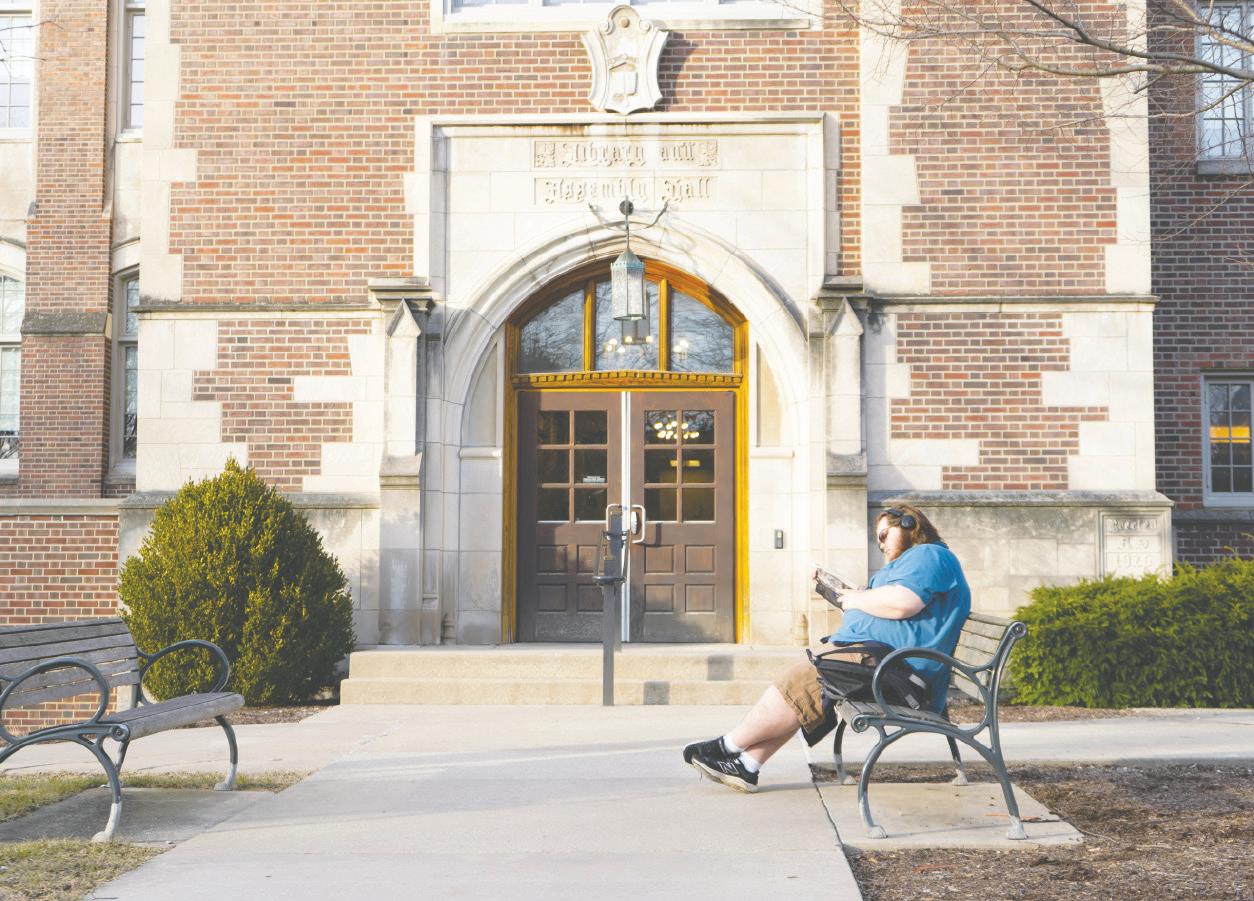
You know, we get to be a part of their day. It’s a privilege for them to give us their time of the day, and then make something good for them that makes them smile.”
- MARIA ELADIA, Co-owner of Baryo
husband has been peoples’ reactions when she sees them try her family’s authentic Filipino recipes. She also appreciates the “bed talks” she has at night with her husband.
“My husband and I, before we go to bed, we talk. It’s cringy, but sometimes we cry. But the best part [is] the smile. The smiles, not only the employees but also the customers,” Eladia said. “You know, we get to be a part of their day. It’s a privilege for them to give us their time of the day and then make something good for them that makes them smile.”
Reporter Maya Kim contributed to this article.
Contact Ella Howell via email at ella.howell@ bsu.edu.
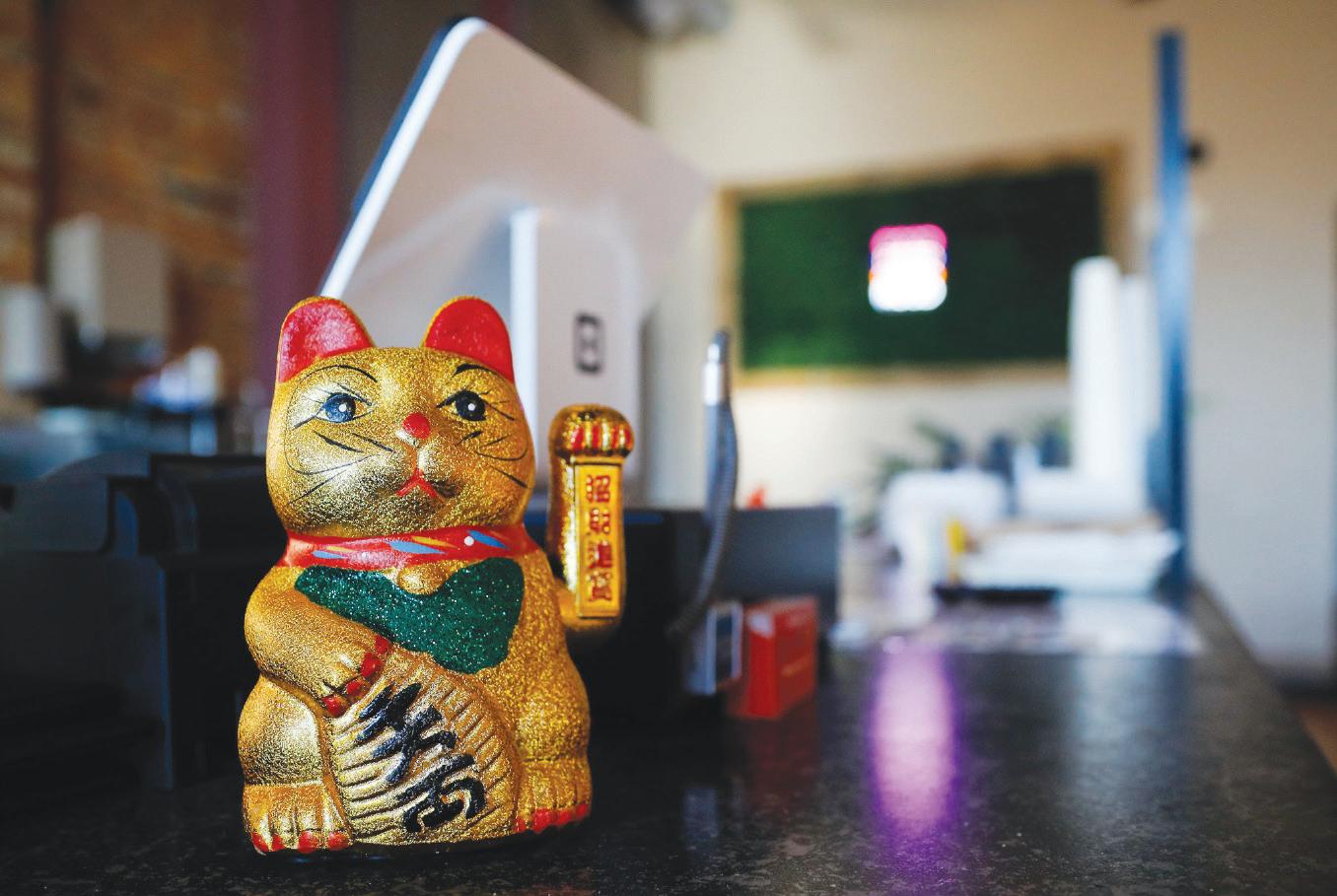
15 Toss a coin?
18 Region known for Wagyu 22 Growing old 23 Beagle’s bowlful
25 “Yeah, guess again”
26 Catch a whiff of 27 Withholding information?
33 Current-ly?
35 “Well, I’ll be!”
36 Question from behind a closed door
38 Japanese broth dish
39 Trading letters
41 Dry as the desert
43 “I’m home, dear”
47 Al fresco dining area
49 Soft “Hey, you”
carrying the Vice President
3 Films that have been formatted to fit a smaller screen, e.g.
4 Apples that are inedible
5 Tired initials?
6 Aired 7 Caviar bit 8 Theoretical physicist Wolfgang 9 Negative charges? 10 Chimp relative 11 Boggy biome 12 Floating
51 Potential reply to 36-Down
52 Early mobile phone manufacturer
53 Haircuts that may not be noticeable
54 Type of chemical bond
58 Numbs, maybe
61 High-end camera initials
62 Undershirt, for one 63 Fury
64 NNE opposite


















